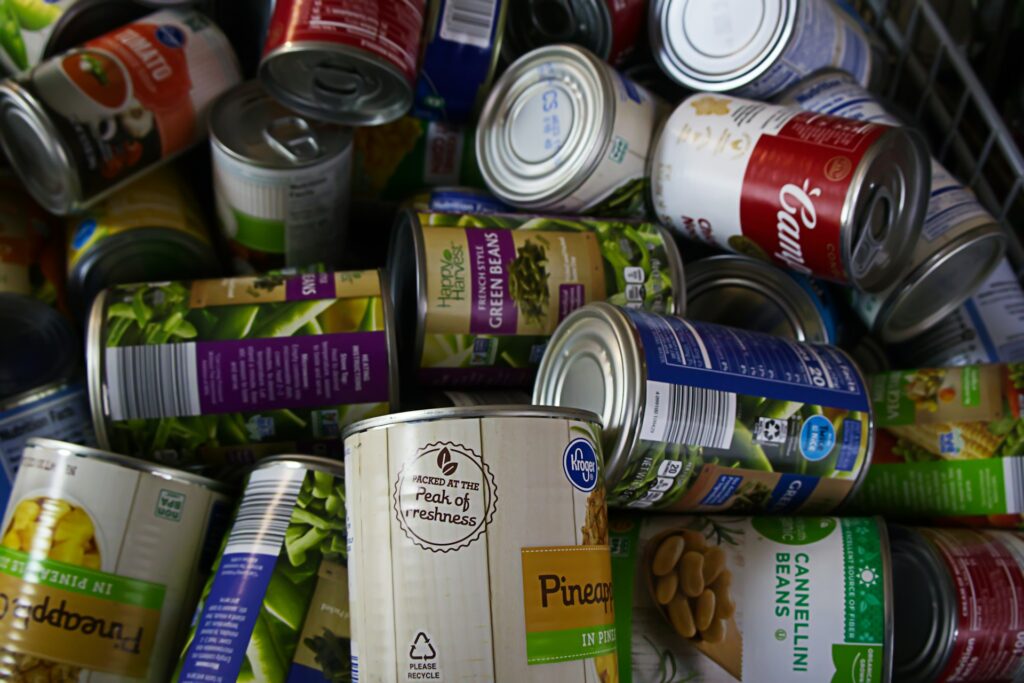Listeria

Listeria In the past decade, a foodborne pathogen called Listeria monocytogenes has been linked to multiple foodborne disease outbreaks that have been connected to ready-to-eat foods like hot dogs, luncheon meats, cold meats, fermented and dry sausages and other deli-style meat and poultry. Listeria monocytogenes can live in the intestines of animals without causing illness. This could lead to the spread of bacteria to dairy and meat products. When food products are prepared for consumption through cooking or other heating techniques like pasteurization, listeria is eliminated. However, there is a chance that ready-to-eat food could get tainted during preparation, thus posing a risk. Therefore, those who are more vulnerable to the potentially fatal consequences of a Listeria infection, such as expectant mothers and those with compromised immune systems—should take particular precautions. If ready-to-eat food is heated to a scorching temperature at home, Listeria monocytogenes is eliminated.
Bacillus cereus

Bacillus cereus Bacillus cereus (B. cereus) is a bacterium frequently present in the environment, existing as spores. Food contamination typically occurs from the soil, air, or water. Rice poses a significant food safety risk because of B. cereus. Raw rice may be contaminated with B. cereus spores that can survive storage. Once the rice is cooked, these spores can germinate and proliferate. To minimize your risk, consume rice immediately after cooking, or keep it at a temperature above 60°C and promptly refrigerate any leftovers. Additionally, when reheating food, ensure that it reaches a minimum temperature of 74°C
Salmonella

Salmonella Salmonella is a highly contagious group of bacteria that produces a foodborne illness called salmonellosis. The bacteria are commonly found in the intestines of healthy animals such as chickens, dogs, cats, and turtles. It spreads to humans by direct contact with animals that carry salmonella bacteria and through consuming contaminated foods. The most common symptoms are diarrhoea, abdominal cramps and fever. Common causes of salmonella infection include: Consuming raw or undercooked meat, poultry or egg products Not washing fruits and vegetables before consuming them Cross contamination from raw to cooked or ready to eat foods Improper hand washing after using the restroom, before and during food preparation, after handling raw food and refuse Remember: Good personal hygiene and good food hygiene are essential in preventing foodborne illness or reducing the risk posed by contaminated food. Wash your hands before eating meals and after playing with animals.
About Mold

About Mold Have you ever gone to your refrigerator for a delicious snack only to find mold has made its home on your fruit or vegetable? Molds have been around for over three million years, so the likelihood we’ll eliminate their presence is slim. Some molds perform valuable functions in our lives. For example, they age, and flavour cheeses and they are used in bread making, fermenting liquor, producing soy sauce, producing penicillin, and manufacturing citric acid used to flavour soft drinks.
About Yeast

About Yeast Yeast is a living single-celled fungus, belongs to the kingdom Fungi, that is used in both bread and beer making. The species of yeast used in food is called Saccharomyces cerevisiae, a Latin name that means “sugar fungus.” The organism is very common all around you, in the air and on the skin of fruits. Although these organisms are often thought to be detrimental to human health, many of them actually exist in the foods you enjoy, such as bread, malt drinks etc. Yeast is a common fungus found both inside and outside the body. The body, however, is equipped to maintain a healthy balance of both bacteria and fungus. Benefits derived from yeast Leavened bread contains yeast, which is a common fungus both inside and outside the body, as well as an effective organism for making bread rise. Yeast functions by metabolizing the simple sugars of the dough. The byproduct of the metabolic activity is carbon dioxide and alcohol, which in turn causes the bread to rise. That is the reason why yeast is vital in bread baking, brewing and winemaking. This process is referred to as fermentation, meaning the chemical breakdown of a substance by micro-organism such as yeast. Yeast plays such a crucial role in winemaking that without its presence, you cannot turn grape juice into wine. The juice simply will not ferment without the help of yeast. Bread baking, beer brewing and winemaking is a beautiful combination of art, science, magic and involves loads of patience.
Information You Need To Know About Foods In Cans

Information you need about foods in cans Foods can be preserved for extended periods of time by canning them and sealing them in airtight jars. The late 18th century saw the development of canning as a means of giving sailors and soldiers a reliable supply of food during times of conflict. Each product will require a somewhat different canning procedure, but there are three basic phases. Processing food can be cooked, sliced, chopped, pitted, or shelled. Sealing (Closing). Cans are used to seal the processed food. Heating up. To eradicate dangerous microorganisms and stop spoiling, cans are heated. This makes food safe to eat for up to three years on the shelf. Fruits, vegetables, beans, soups, meats, and seafood are among the common foods that are canned. The food is heated to a safe temperature during the canning process, which also creates a vacuum and keeps bacteria out of the food. The food is heated to a safe temperature during the canning process, which also creates a vacuum and kill the bacteria which may be present in the process. This produces an environment that makes it very unlikely for dangerous bacteria to proliferate unless the cans get damaged.
Clostridium botulinum

Clostridium botulinum depicted below is a Gram-positive, anaerobic, rod-shaped, spore-forming bacterium that produces the most potent biological toxin known, botulinum neurotoxin. Botulinum toxins are neurotoxic and therefore affect the nervous system. Foodborne botulism is characterized by descending, flaccid paralysis that can cause respiratory failure. Botulism is usually associated with foods that have received insufficient or no preservation treatment, been kept out of the refrigerator for a while, and been eaten without the proper heating are typically linked to botulism. A bad smell that alerts consumers to the presence of Clostridium botulinum in food is often, but not always, produced by the bacteria. Since heat kills botulinum spores, under-sterilization; either by processing at a temperature too low or for an excessively short period of time, or a combination of these is the main offender in home canning. Prevention of foodborne botulism is based on good practice in food preparation particularly during heating/sterilization and hygiene.